
Key Points
- 3,900 in the S&P 500 was Met with Force
- Small Caps Hold the Line
- Bonds Get Dunked at the 2018 Lows
- Commodity Uptrends Are in Jeopardy
- Volatility Pulls Back Slightly in an Uptrend
Mid-Week Market Update – United States
The bears retained control in the S&P 500 after the index found long-term resistance at the 3,900 zone below declining 50 and 100-day moving averages. Below this level and the door remains open to the pre-COVID highs. RSI remains in the bearish regime that’s defined the downtrend year-to-date but has yet to become oversold since January.
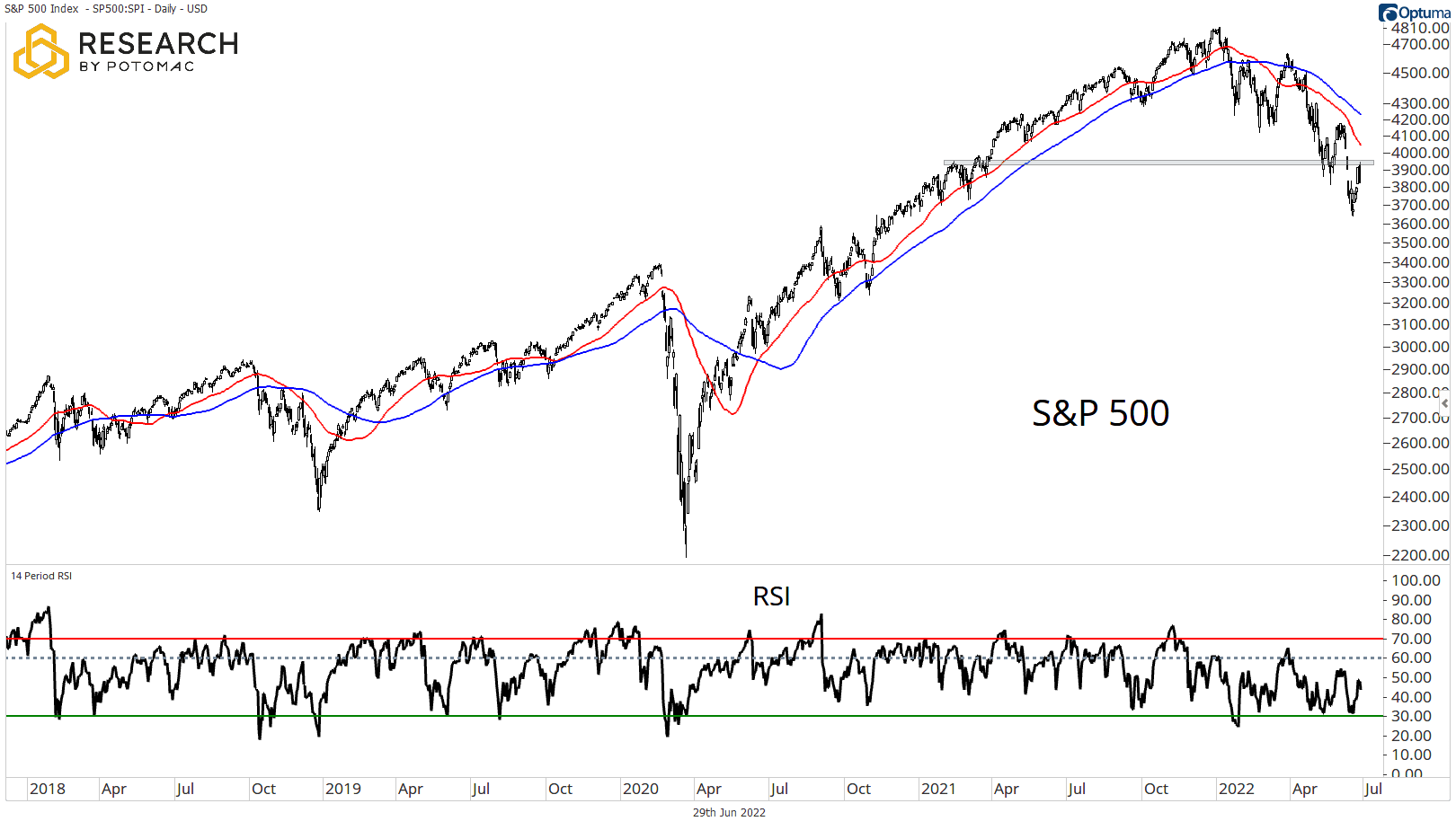
Small Caps have managed to recover the 1,150 breakout level to the upside after breaking down below this zone earlier in the month. The price action takes place below declining 50 and 100-day moving averages, with RSI remaining in a bearish regime. Relative to the S&P 500, the group remains an in-line performer at best—not breaking out, but not breaking down.
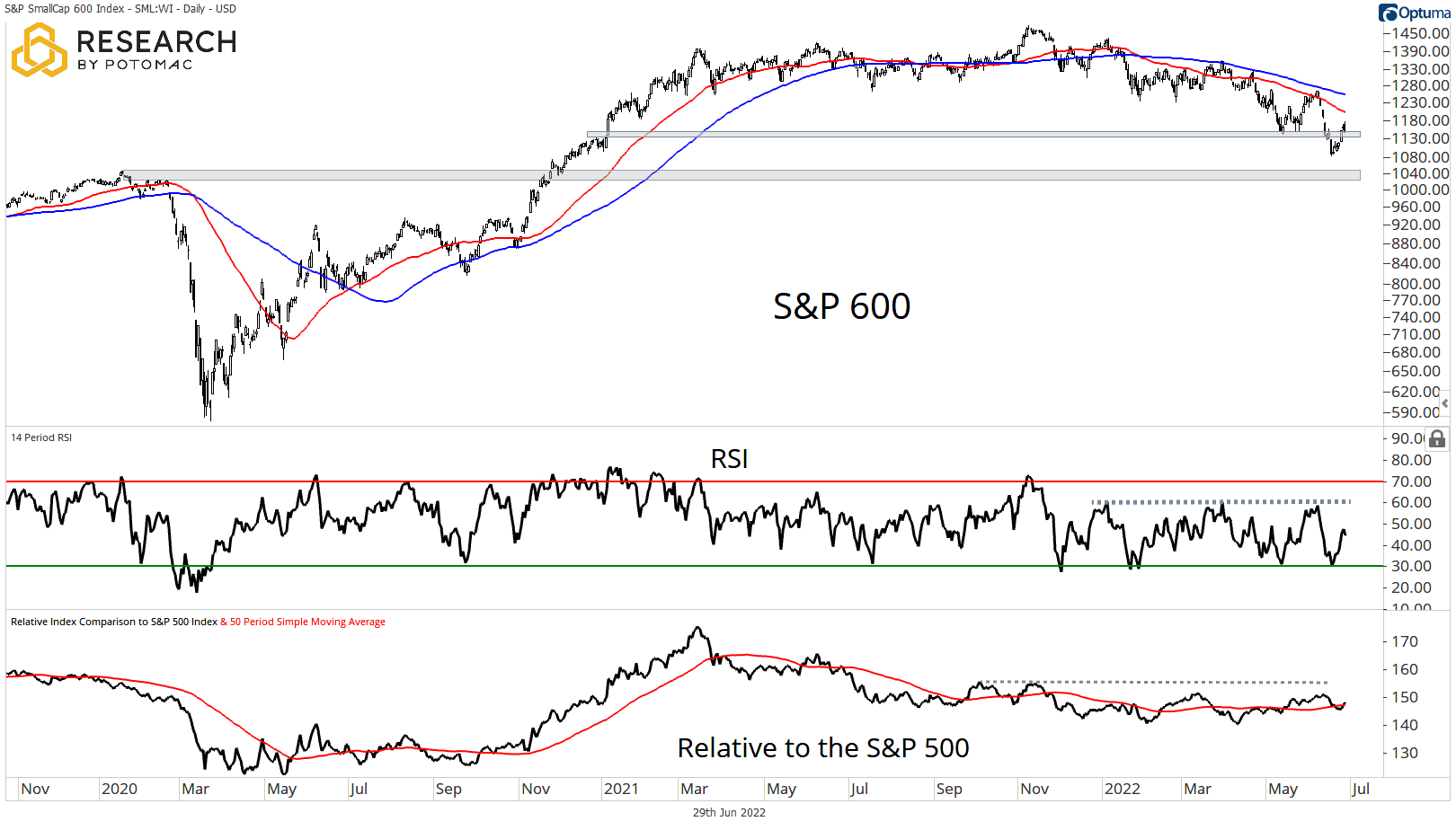
The tech-heavy NASDAQ 100 continues its series of lower highs and lower lows after yet another selloff in yesterday’s trading session. Should the index break 11,000, there is room for the pre-COVID highs. RSI continues to remain in a bearish regime, compressed between the 30 and 50 zone. Relative to the S&P 500, the group found relative resistance at the ratio’s declining 50-day moving average and continues its underperformance.
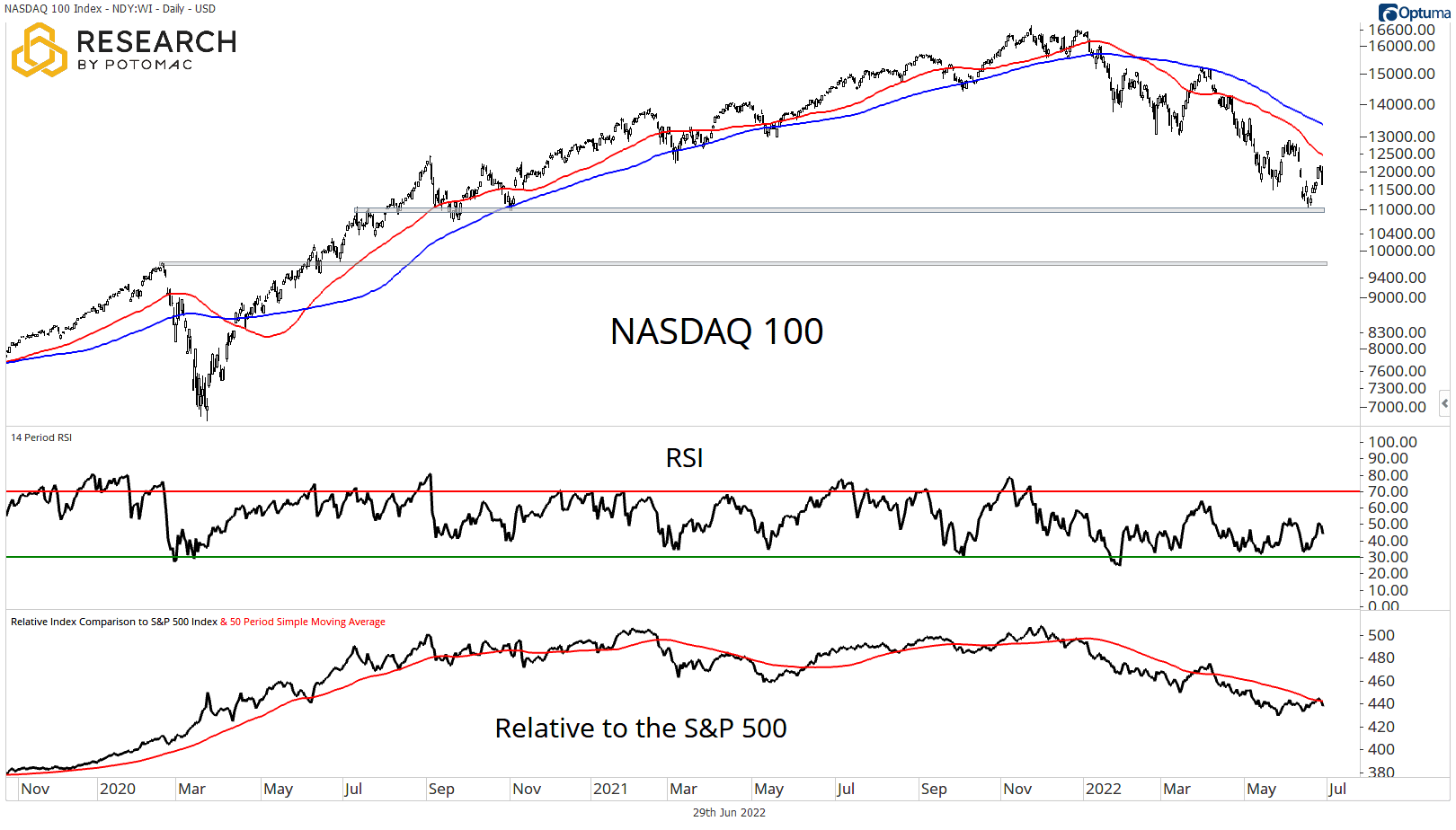
After a feeble attempt to break out of the 2018 lows to the upside, the 10-Year Treasury note has sold off below this level in a near-textbook example of long-term support and resistance. The declining 50 and 100-day moving averages define the downtrend, with RSI remaining in a bearish regime.
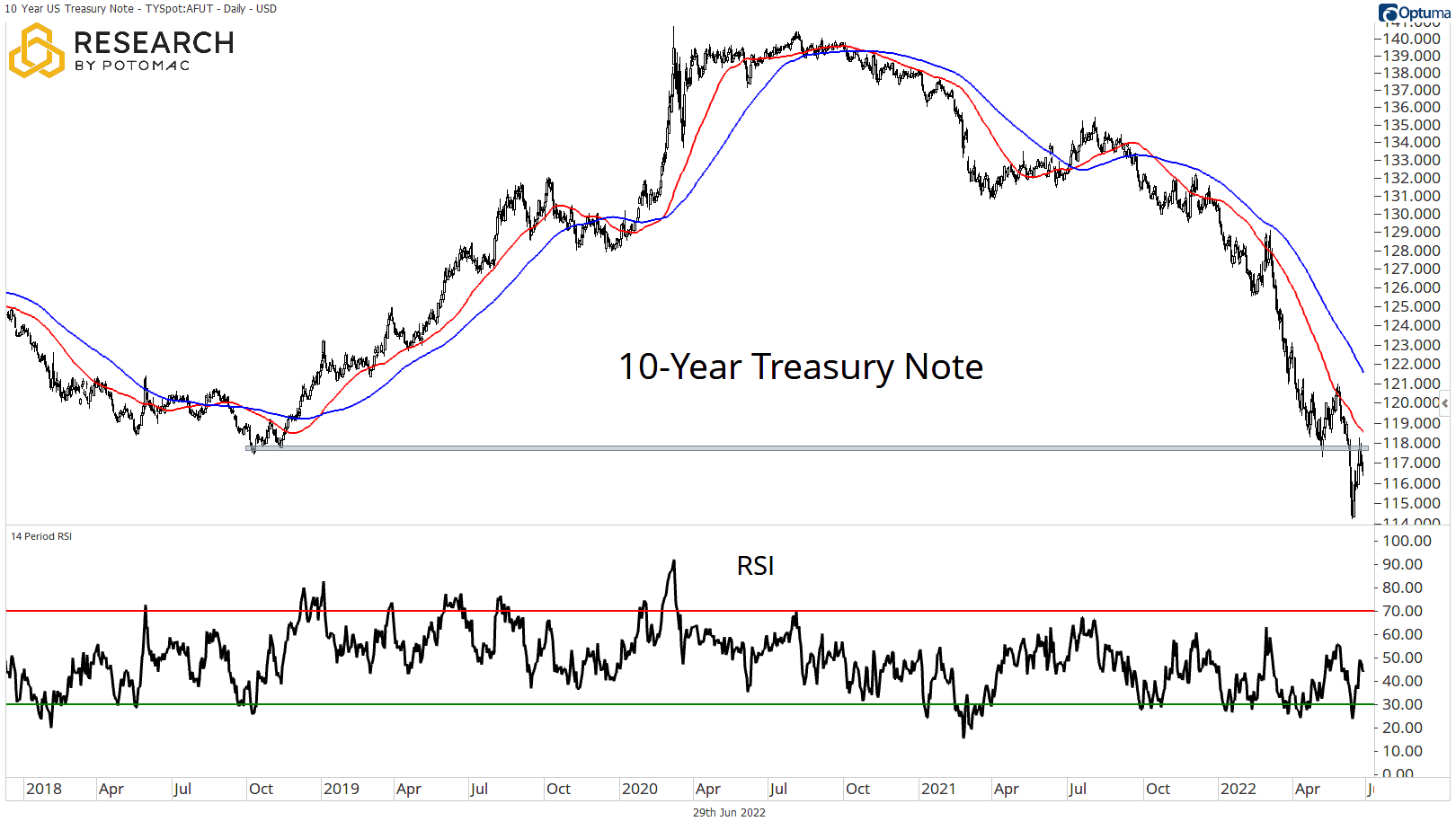
The Bloomberg Commodity Index has undercut both rising 50 and 100-day moving averages to the downside and found support at the February highs of this year at the 120 zone. RSI is coming out of an oversold condition to the upside, while performance relative to the S&P 500 is testing the ratio’s rising 50-day moving average from below. While the space has resisted much of the selling pressure year-to-date, it would appear that this asset class is unimmune to the pressure. Should the 120 zone give way to the downside with relative performance continuing to falter, the bears could end up taking control of the space.
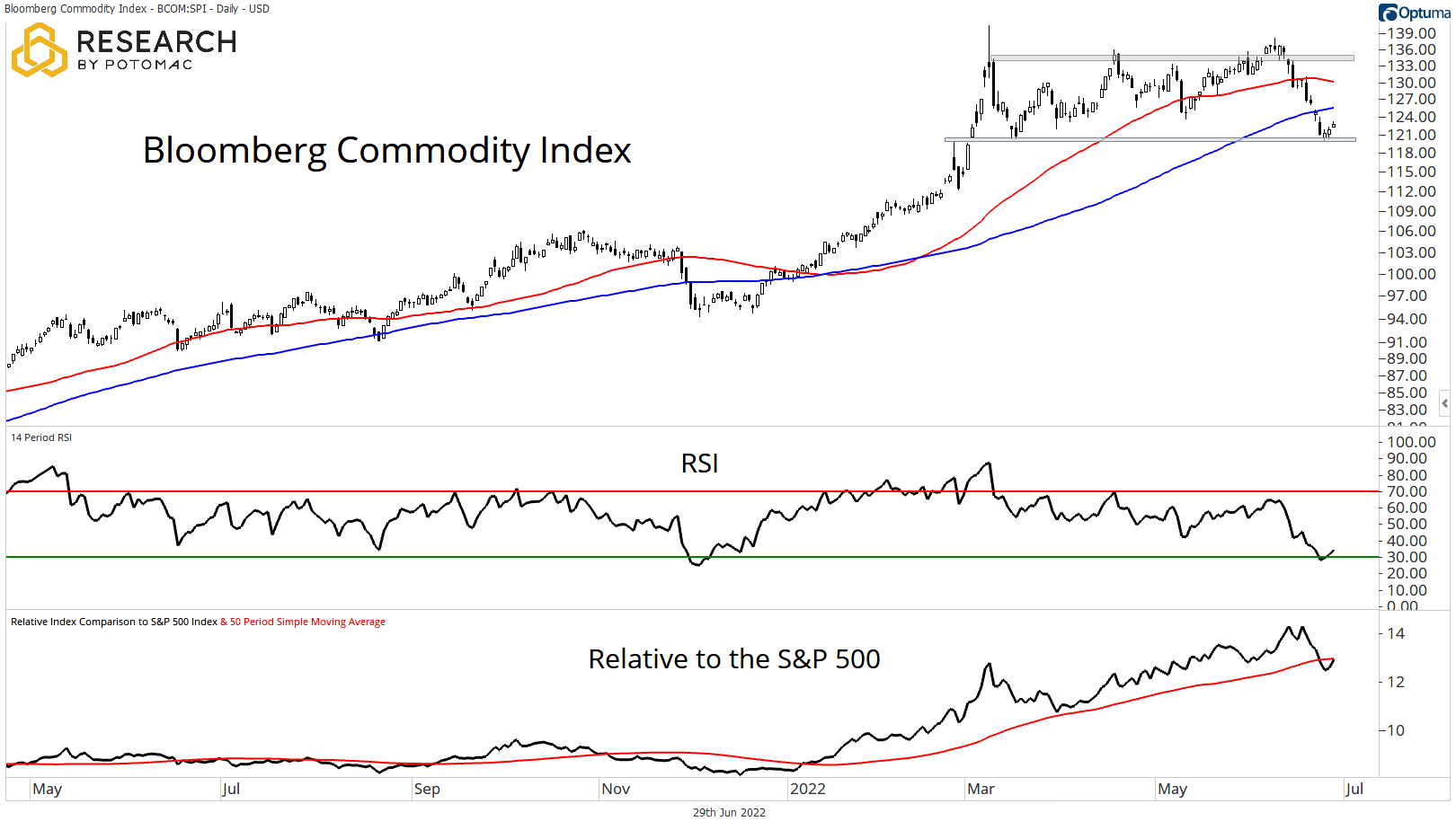
The S&P 500 Volatility Index (VIX) continues to trend higher but has remained below the 10-day moving average for a week as the S&P 500 has recouped some of the short-term losses. While forward-looking volatility continues to remain elevated, note the lower highs since March of this year coupled with higher lows. Could a regime shift in the VIX be on the horizon? It’s entirely possible but has yet to play out.
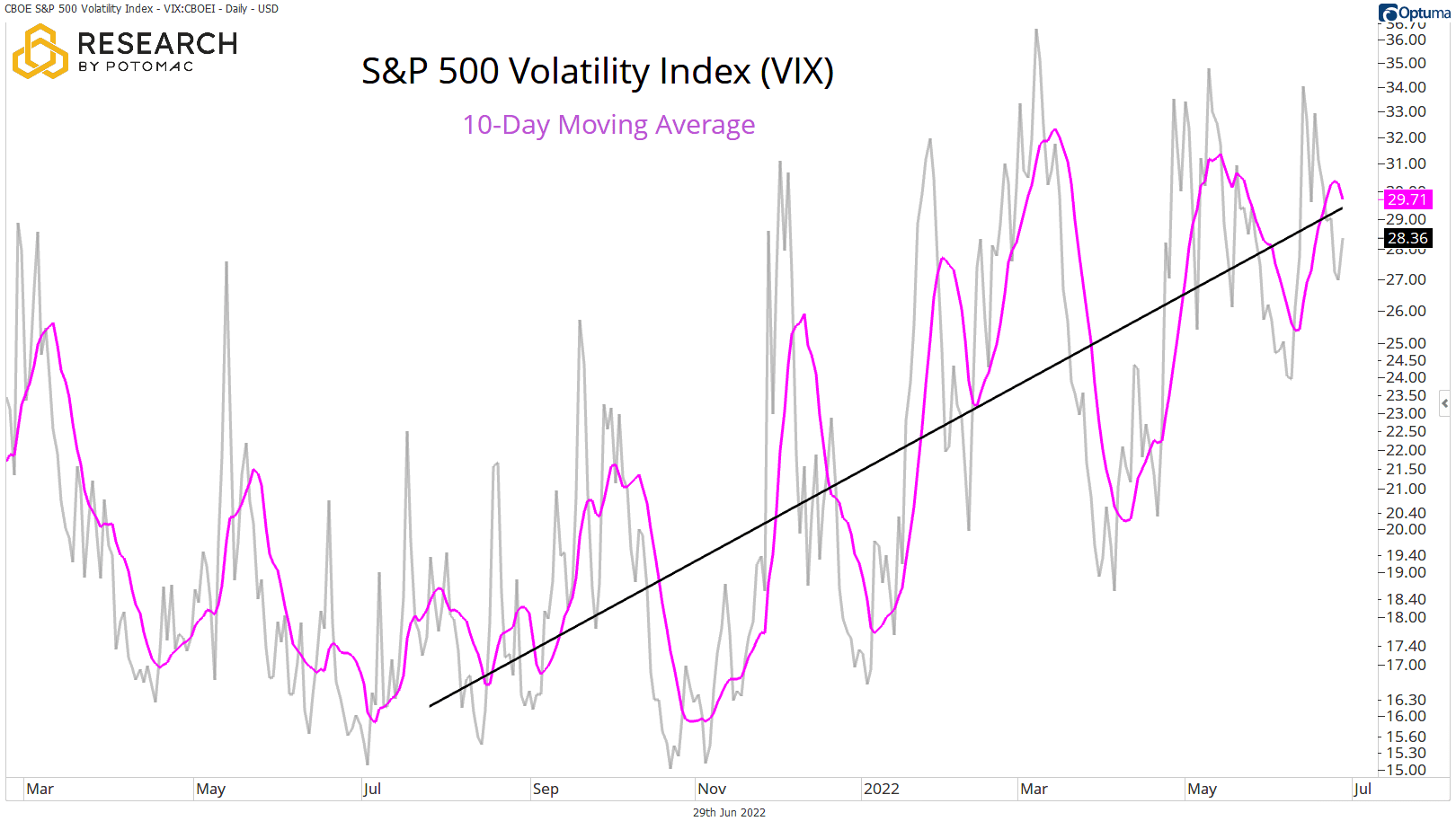
Across timeframes, realized volatility in the S&P 500 via ATRs have pulled back slightly from their recent highs but remains elevated. These readings continue to print values not seen since the summer of 2020. As volatility remains elevated across timeframes, the dispersion of potential outcomes widens for the S&P 500.
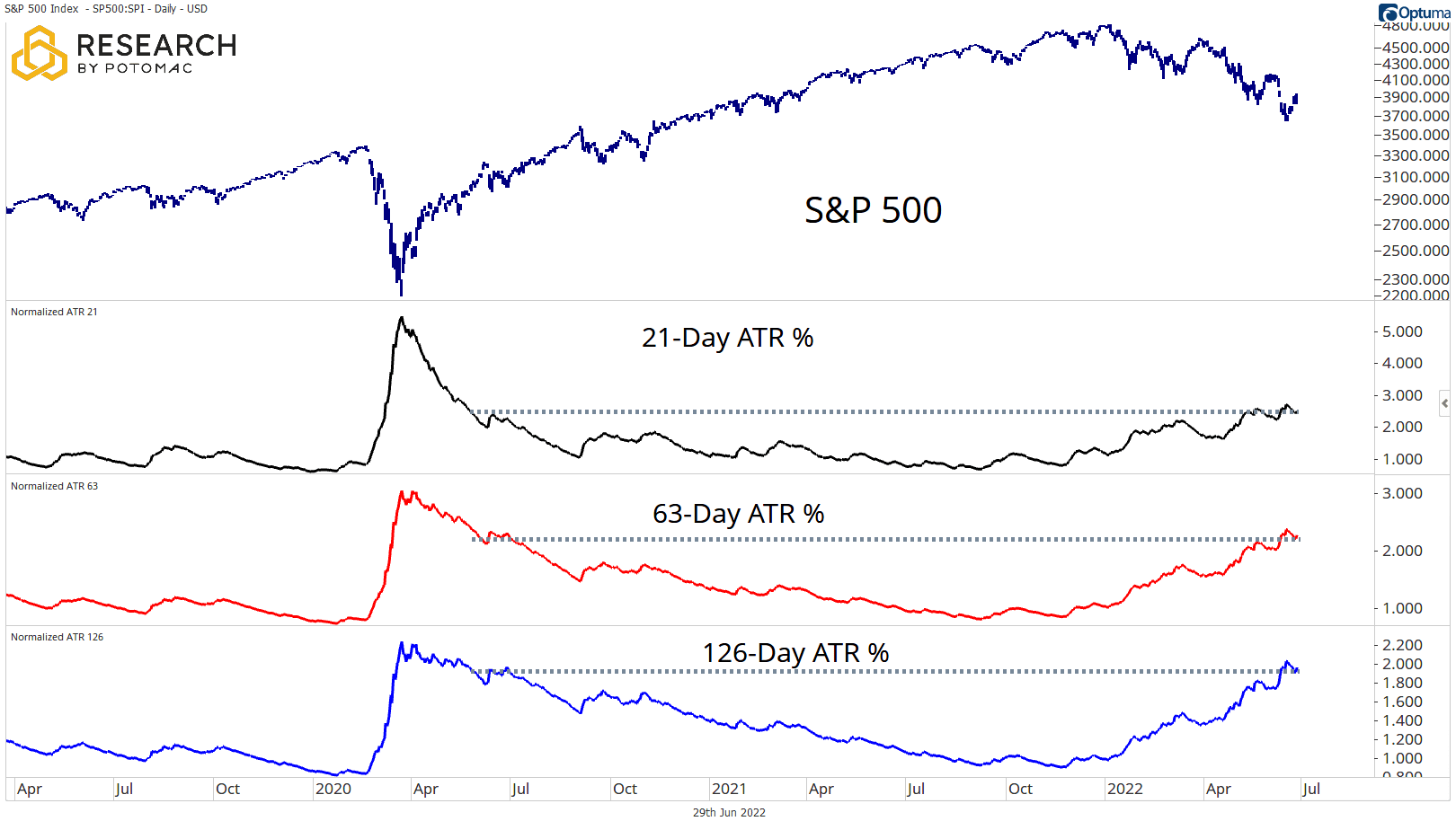
Take-Aways:
What’s most interesting in this environment of seemingly indiscriminate selling is the development with Small Caps holding the January 2021 upside breakout zone and remaining a neutral performer on a relative basis while their larger peers bear the brunt of the selling pressure. The 2018 lows have proved to be a major hurdle for fixed income investors, while the Commodity uptrend comes under pressure. Both forward and realized volatility continues to trend higher, leaving investors with an environment of both heightened opportunity and heightened risk.
Disclosure: This information is prepared for general information only and should not be considered as individual investment advice nor as a solicitation to buy or offer to sell any securities. This material does not constitute any representation as to the suitability or appropriateness of any investment advisory program or security. Please visit our FULL DISCLOSURE page.
